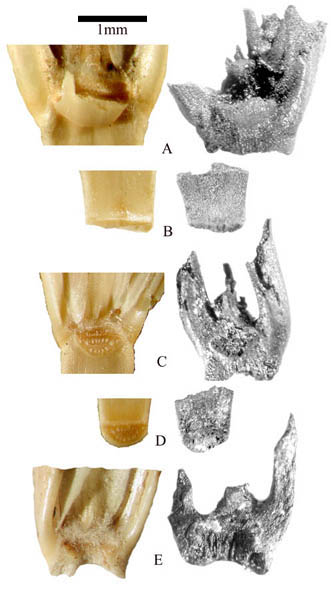
Specimens of wheat spikelets bases (dispersal units). Left, fresh material; right, ancient charred specimens. A) from Chalcholithic site shows domestic indehiscent spikelets with part of the upper spikelet remaining attached. B) The lower part of the spikelet has broken edge. C) Wild dehiscent spikelets from Tell Qaramel possess an oval abscission scar where vessels are visible, also seen in the lower part of the spikelet (D).
E) Most ancient charred spikelets from early agriculture sites in the Near East are not identifiable having been damaged either during dehusking like this one or for reasons associated with charring. Initially we mistakenly took these damaged spikelets for domestic types. But in fact the crucial part is missing, and its rough apperance is misleading. The fresh damaged specimen was produced when we dehusked wild einkorn in the lab, domestic einkorn produced the same result. The charred spikelet in E is from Tell Qaramel. These types are less common on later sites which may suggest changes in dehusking techniques and/or better preservation.